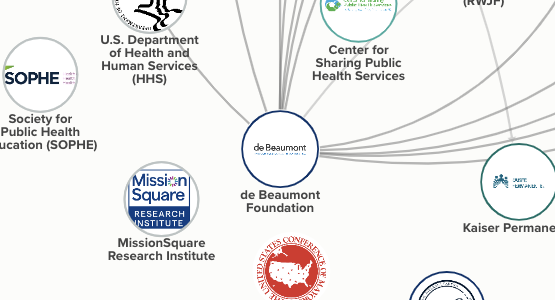The National Consortium for Public Health Workforce Development has launched the Public Health Workforce National Actor Map, an interactive tool compiling efforts across various organizations to support the public health workforce. The National Consortium collaborates to strengthen and support the public health workforce through research, public engagement, advocacy, convening, and learning opportunities.

Government agencies, philanthropic foundations, professional associations, academic institutions, and other organizations throughout the United States are developing and undertaking programs to support the governmental public health workforce. While not all of these actors are specifically motivated by the National Consortium’s goal of more robust and equitable career pathways for this workforce, their contributions further this outcome.
Propelled by the desire to help the field better understand who is doing what, and more importantly, to encourage these and other actors to collaborate and coordinate, the National Consortium created the Actor Map. This tool enables users to deeply examine the efforts of each actor, while also exploring the connections that exist between them.
A wide variety of work is being done. Some organizations are focused on preparing the future workforce through education and training. Others are dedicated to creating cultures within public health departments that, by centering the needs of a diverse workforce, enable current employees to thrive. Some actors are rethinking the processes through which they bring in new workers, while others are creating strategies to retain those they have and invest in them to improve outcomes.
As you explore the Public Health Workforce National Actor Map, consider the new connections and collaborations you could make to benefit your own efforts and bring greater alignment and partnership to advance the public health workforce.
The Actor Map is a snapshot in a moment in time. We anticipate that new actors will “put themselves on the map” in the future, and hope they will do so with the intention of building a more effective governmental public health workforce that reflects the communities they serve.




